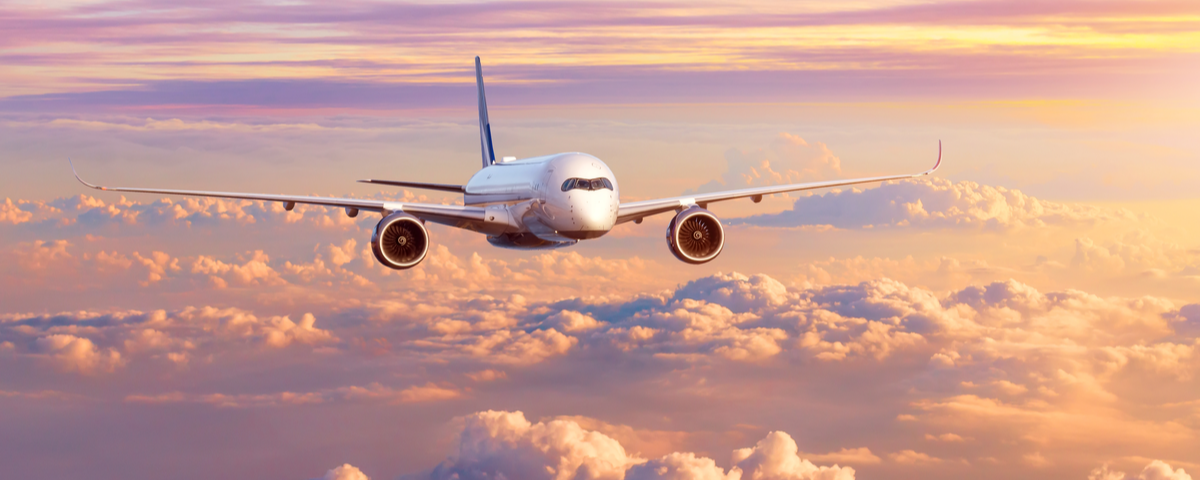Airlines’ business models, technology developments, new products and services, sustainability approaches… discover some of the factors that will shape and transform the global aviation industry after COVID-19.
Uncertain, unprecedented, challenging… are some of the adjectives that the travel and tourism industry has been hearing during the last eight months. These attributes have one thing in common, they all refer to COVID-19. This disease, which turned into a global pandemic, unleashed a disruption that continues to affect our society as well as different sectors of our industry, ranging from accommodation to transportation.
Transportation companies have been badly impacted, particularly airlines. Before the outbreak of coronavirus, the dominant airline companies achieved the most profitable period of aviation history between 2014 and 2019. However, COVID-19 and its consequent crisis put a halt to this record. Last month, the International Air Transportation Association (IATA) estimated a 66% drop in terms of passengers’ demand and accounted for $84.3 billion for total losses due to the global pandemic. This negative impact affects not just global carriers but manufacturers, airports, maintenance and repair providers, and larger stakeholders like governments or financing organizations.
Therefore, a transformation is already in the making. As shown by Forbes, 70% of aviation professionals worldwide believe that the industry will be basically transformed by COVID-19, while 45% of them expect the sector to be recovered, in terms of revenues, no later than 2022. Knowing that the pandemic has started a shaping process in the aviation industry, now the question is how the sector will evolve over time.
Airlines’ survival
In the COVID-19 era, global carriers’ main priority is to make sure that they have enough financial resources to keep operating. Travel restrictions aggravate an already plummeted passenger demand caused by fear of contagion, resulting in further damage to many airlines that operate on thin margins. Therefore, airlines need to gain liquidity to withstand the ongoing crisis. The carriers that achieve, and maintain, enough liquidity will be in a much better position for the future aviation market. These concerns of financial nature are pushing airlines to implement measures like upgrading premium cabins or increasingly charging economy passengers to increase revenues. At the same time, an overall raise in fares seems inevitable in certain markets or routes as well as increasing practices like leasing of new aircrafts or even reducing fleets by cancelling aircraft orders. However, not every airline may reach the desired levels of liquidity. Throughout 2020, more than 40 worldwide airlines ceased their operations due to not generating enough revenue and cash flow.
State aid is playing an important role in terms of carriers’ endurance with flag carriers being the most benefited. But state aid attaches some elements that will restrain the sector’s flexibility in the future, including taxes, reimbursement conditions, and higher levels of regulation from governments. If not managed effectively, these situations may lead to restrictive or protectionist approaches that threaten the open skies system. Overall, changes in airlines’ business models can be expected as well as an even higher importance in terms of companies’ size in the long term. This search to gain magnitude on the supply side will bring new mergers or acquisitions, although with adapted conditions to the market’s situation.
Restructuring
COVID-19 has brought some changes into the aviation industry. Since the pandemic’s outbreak there is a general reduction of available flight options as well as an elimination of both short-distance routes and less-established ones in the long-haul segment. These measures are aligned with the previous paragraph’s aim: gaining liquidity. Parallel to this, a switch from air travel to high-speed rail is gaining momentum, with Asia leading this trend. Nevertheless, travellers are keen to fly again. Domestic markets are experiencing a considerable growth as international destinations are subject to travel restrictions and other limitations such as quarantines. In addition, short-haul flights are taking the lead with respect to long-hauls, a trend that is likely to continue at least until an effective health solution is developed and used to restart consumer confidence.
New innovative products and uses for aircrafts will keep coming. Flights to nowhere in Australia or dining experiences on a Singapore Airlines’ A380 are just two examples of the proliferation of creativity applied to the aviation sector that show that airlines use periods of crisis to reinvent themselves and the way they obtain revenues along with a product approach that is successful even when aircrafts are grounded. The pandemic and its negative impact to commercial flights is contributing to a boom of charter flights, an alternative that has the potential to become affordable for more market segments.
Also, higher levels of digitalization will arrive both to aircrafts and airports. Contactless technologies, virtual reality, artificial intelligence… will be massively implemented in the customer’s journey as well as enhanced to improve key aspects like health and safety or security. However, the role of technology will need to be adjusted to address one of the main challenges for the aviation sector: sustainability. Some experts suggest that, along with developing technology, finding alternative capital providers that invest in the industry will contribute the global aviation sector to strive for a genuine environmental approach that helps to improve its overall reputation in terms of sustainability.
Although travel risk is continuously evolving, the aviation industry has made it through in past crises. COVID-19 is an ongoing situation in which there are multiple questions yet few certain answers. This blog shows some of the key factors that need to be monitored by the aviation sector to understand how the industry will be once the current crisis passes. The first opportunity to do so is by attending to the discussion between top aviation experts (9 November, from 16:00 to 17:00) that is included in the virtual programme of the World Travel Market.
You may also be interested in…
- How travel organisations are thinking creatively during the crisis
- Ripping up the travel marketing manual for 2021
- Which trends should guide tourism’s recovery?

